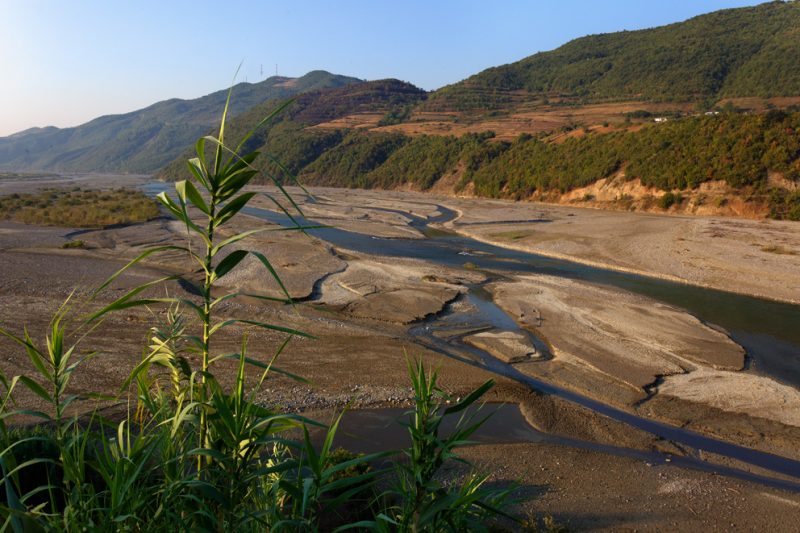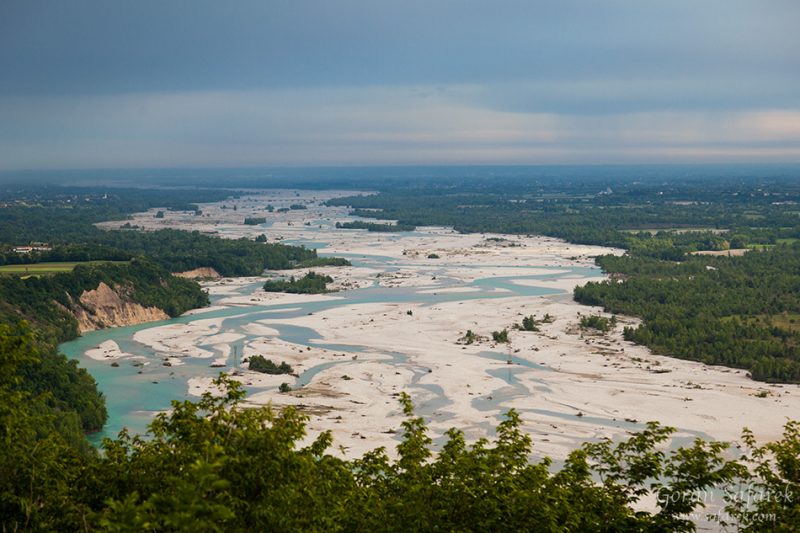Braided Streams

One of the most beautiful shapes of the rivers, the braided streams are wider riverbeds where the water is flowing in several channels through the sediment. It is typical for middle stretches of the rivers.
Deposition of sediment, in the bar in the center of a stream (a midchannel bar) diverts the water toward the sides, where it washes against the stream banks with greater force, eroding the banks and widening the stream.
Formation of the braided stream
Formation of the braided stream
A stream heavily loaded with sediment may deposit many bars in its channel, causing the stream to widen continually as more bars are deposited. Such a stream typically goes through many stages of deposition, erosion, deposition, and erosion, especially if its discharge fluctuates. The stream may fill its main channel with sediment and become a braided stream, flowing in a network of interconnected rivulets around numerous bars. A braided stream characteristically has a wide, shallow channel.
During the floods, the entire river bed is usually underwater so smaller branches inside are not seen,
The Tagliamiento River in Italian Alps is an example of the braided river:

A stream tends to become braided when it is heavily loaded with sediment (particularly bed load) and has banks that are easily eroded. The braided pattern also develops in deserts as a sediment-laden stream loses water through evaporation and percolation into the ground. In meltwater streams flowing off glaciers, braided patterns tend to develop when the discharge from the melting glaciers is low relative to the high amount and ranges of the size of sediment the stream has to carry.
Braided streams are morphologically very unstable habitat. Most of the plants that grow there are pioneer species.



